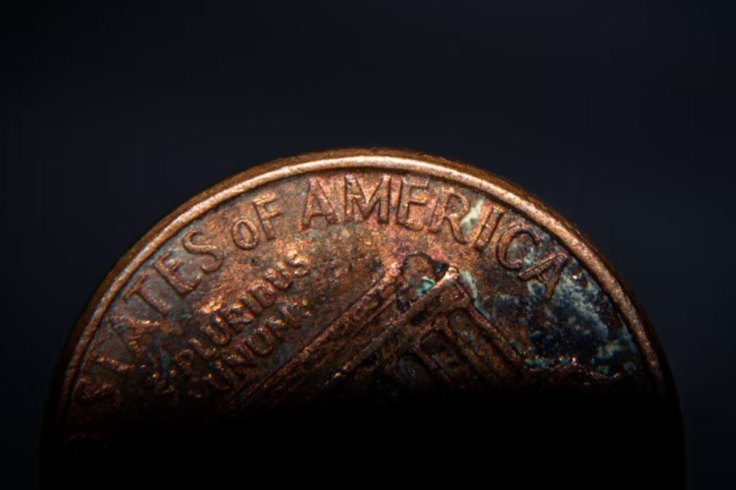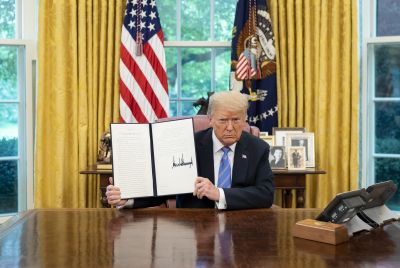Last US Penny Minted in Philadelphia After 238 Years Amid 'Chaotic' Phase-Out Causes Paradoxical Coin Shortage
Retailers lose millions as 300 billion pennies sit idle, while businesses struggle for change during the government's abrupt coin withdrawal

The US Mint struck its last circulating penny in Philadelphia on Wednesday, marking the end of a 238-year tradition. However, this sudden phase-out of America's smallest-denomination has triggered an unexpected crisis, with retailers losing millions despite an estimated 300 billion pennies still circulating nationwide.
US Treasurer Brandon Beach pressed a button to produce the final legal tender penny at the Philadelphia facility, where the coin has been produced since 1793. The move is expected to save approximately $56 million (£44 million) annually, as each penny costs nearly four cents to produce.
Yet, the abrupt removal of the coin has been described as a 'chaotic' implementation by industry leaders. Retailers are now navigating a legal and financial minefield, with no clear federal guidance on how to handle cash transactions amidst the shortage.
Retailers and Consumers Suffer as Shortage Hits Home
The paradox of the penny's elimination is proving costly for businesses. Kwik Trip, a Midwestern convenience store chain serving 20 million customers annually, has begun automatically rounding down all cash transactions to avoid legal disputes. This policy could cost the company millions of pounds each year.
'There's no way that we wanted to charge customers an extra 2 cents because we just didn't think that was fair,' said John McHugh, spokesperson for Kwik Trip. 'It's not their fault that there's a penny shortage.'
The National Association of Convenience Stores estimates that if all retailers adopt similar rounding policies, the industry could face losses of up to $1.2 million (£950,000) daily. With around 17 per cent of Kwik Trip's customers still paying cash, the financial impact is intensifying rapidly.
Distribution Failures and Lack of Government Guidance
The root of the crisis lies not in a supply shortage but in failures within coin distribution. The Federal Reserve has closed 100 of its 170 coin distribution terminals for penny services, preventing regions with surplus coins from redistributing to areas facing shortages.
'We have been advocating for the abolition of the penny for 30 years. But this is not the way we wanted it to happen,' said Jeff Lenard of the National Association of Convenience Stores. He criticised the lack of governmental planning in the process.
This stands in stark contrast to Canada, which announced its move to phase out the one-cent coin in 2012. Canada provided detailed guidance to businesses and implemented a multi-year transition, which continues today. The US government, by comparison, issued only a brief social media announcement during the Super Bowl, offering little practical guidance to retailers.
Legal Risks and Business Losses
At least 10 US states prohibit rounding cash transactions to the nearest nickel, exposing retailers to legal risks. Federal programmes such as the Supplemental Nutrition Assistance Programme (SNAP) require consistent pricing for all customers, making rounding a potential violation.
To mitigate legal exposure, many businesses are absorbing losses by rounding down. Sheetz convenience stores have resorted to offering free drinks in exchange for 100 pennies, while Kroger has posted signs pleading for exact change.
'We don't want the penny back,' emphasised Lenard. 'We just want some clarity from the federal government on what to do, as this issue is only going to get worse.'
The Irony of Eliminating the Penny
Ironically, eliminating the penny may prove counterproductive. Each nickel costs around 14 cents to produce—almost four times the penny's 3.7-cent manufacturing cost. Economists warn that increased demand for nickels could offset any savings from discontinuing the penny.
President Donald Trump ordered the penny's elimination in February, calling it 'wasteful' after production costs exceeded face value by 300 per cent. However, the hasty implementation has led to unintended consequences, which could ultimately cost taxpayers and businesses more than the coin ever did.
The final pennies minted on 12 November will be auctioned off, while billions of existing pennies remain legal tender indefinitely—collecting dust as retailers scramble for the very coins the nation has deemed obsolete.
This chaotic phase-out underscores the complexities of currency management and the unforeseen consequences of abrupt policy shifts. As the US navigates this transition, questions remain about the future of small-denomination coins and the practical steps needed to avoid further economic disruption.
© Copyright IBTimes 2025. All rights reserved.





















